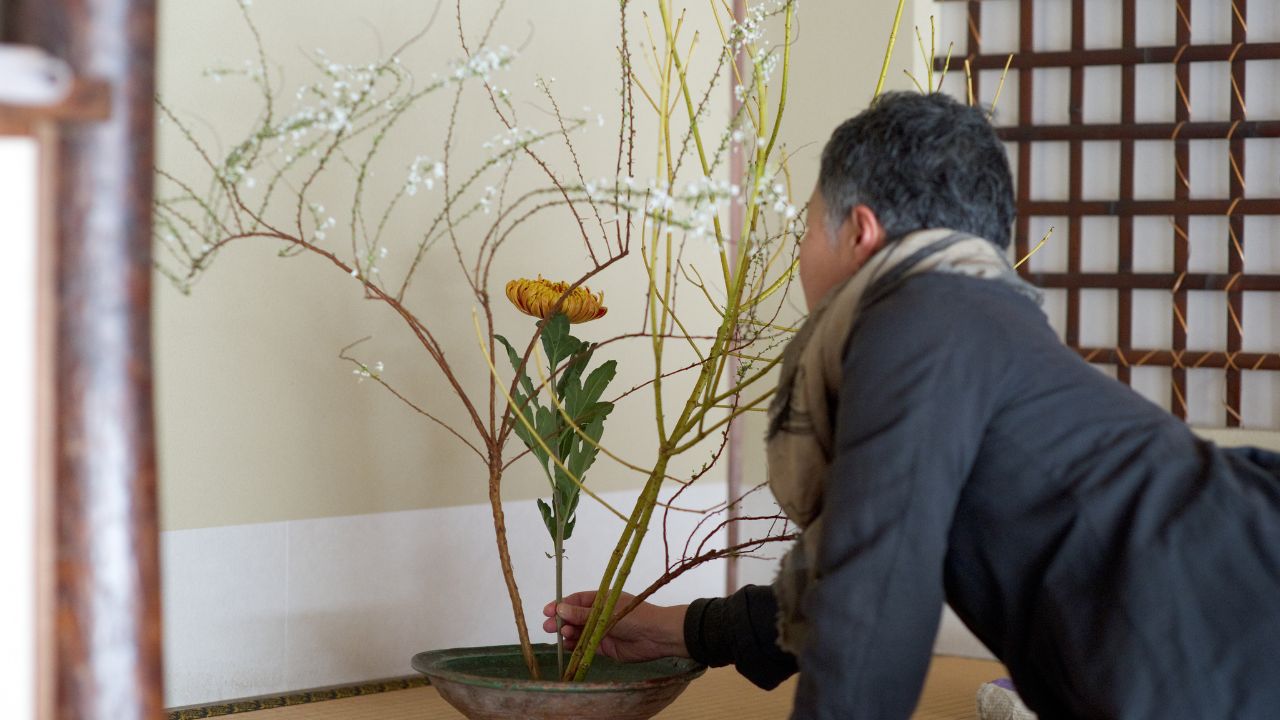Whispers of serene waters, the rustle of delicate petals, the echo of ancient traditions. Japan, a land where modernity intertwines seamlessly with time-honored customs, bears witness to a multitude of intricate and profound art forms, each carrying a story of its unique cultural heritage. Among these, a practice that resonates with the country’s spirit of aesthetic simplicity and mindfulness: Ikebana.
Ikebana, more than a mere act of arranging flowers, is an immersion, a journey of the senses. It is a living testament to the country’s intertwined respect for nature and spirituality, a profound ritual of bringing together the earthly and the ethereal. In the elegance of its forms, Ikebana reflects the essence of Japan’s inherent understanding of balance, harmony, and the transient beauty of life.
Historically, the roots of Ikebana extend deep into Japan’s past, tracing back to the sixth century. Buddhist monks began the tradition, using the arrangement of flowers as an offering to honor the spirits of the departed. From these solemn origins, Ikebana evolved over centuries, nurtured by the hands of artists and spiritualists, blooming into an integral part of Japan’s cultural fabric.
In the midst of a bustling market, amid the vibrant chaos, a sense of tranquility beckons. It is an Ikebana master, silently engaging in her craft. With each blossom she selects, with each stem she trims, she participates in an ongoing dialogue that speaks of reverence and connection to the natural world. To understand Ikebana is to step into her world and perceive through her eyes.
In the heart of Ikebana, it isn’t just the flower that speaks. Each element – the stem, the leaves, the vase – echoes a voice in the composition. They symbolize heaven, earth, and mankind, a trinity that reflects the cosmological vision in the philosophy of this art. Ikebana is a dance between these elements, where silence is as significant as sound, where absence has as much presence as existence.
The first step in an Ikebana arrangement begins with careful selection. The flowers and branches aren’t just chosen for their aesthetics but for their meaning and seasonality, a testament to the Japanese appreciation for the fleeting beauty of seasons. The art, thus, serves as a living calendar, marking the passage of time and the ever-changing rhythm of nature.
Ikebana is not about creating a static spectacle, but a dynamic interaction of shapes, lines, and spaces. Through the minimalist design, the practitioner captures the beauty of imbalance, the asymmetry of nature, a notion deeply rooted in the concept of ‘wabi-sabi’. This appreciation of imperfection, of the transitory and incomplete, is a powerful reflection of the human condition, our mortality and the inherent impermanence of everything.
As the master continues to arrange, she carries out a meditation in motion. In the silence that surrounds her, the rustle of leaves, the snip of the shears, she finds a rhythm. Each cut is a decision, a conscious act of letting go. Each placement is a commitment, a step towards the embodiment of harmony. She moves mindfully, purposefully, her actions echoing the Zen principles of mindfulness and presence.
Looking at the finished arrangement, there’s a serene grace, a quiet, enduring strength. It isn’t just an object of contemplation but a reflection of the universe itself, echoing its rhythms and cycles. The art of Ikebana isn’t merely a physical process but a spiritual journey, a dance of the soul with the elements of nature. In the embrace of its quiet elegance, one discovers not only beauty but also a deeper sense of peace, balance, and appreciation for the fleeting moments of life.
Ikebana, in its essence, isn’t just a mirror to Japanese culture but a window into its soul. Through this mesmerizing art, one can comprehend the country’s deep-rooted spirituality, its aesthetic sensibilities, its reverence for nature, and its profound understanding of balance and harmony.
The world outside may continue in its hurried pace, but in the space where Ikebana breathes, time seems to pause. In this silence, in this stillness, the art reveals its truth. It tells a story of life itself, its ephemeral beauty, its ceaseless cycle of birth, bloom, and inevitable fade. Ikebana is more than a tradition; it’s a timeless symphony that celebrates the art of being, the magic of existence.
As we navigate our modern lives, caught in a web of ceaseless action, Ikebana serves as a gentle reminder of the power of mindfulness, the beauty in simplicity, and the wisdom in nature. And perhaps, as we soak in the lessons from this magnificent art form, we can cultivate our own garden of tranquility within, a space where silence blooms, and the spirit is free.
Through the art and spirituality of Ikebana, we are invited not only to appreciate the rich culture of Japan but also to introspect, to reconnect with our own spirit and the world around us. As we journey through this art form, we realize that Ikebana is more than an arrangement of flowers; it is life itself, blooming in all its transient glory, whispering the timeless wisdom of nature.
And here we come to the end of our episode today. This is your host, Danny, saying thank you very much for listening to our episode today. I will see you next time.











0 Comments